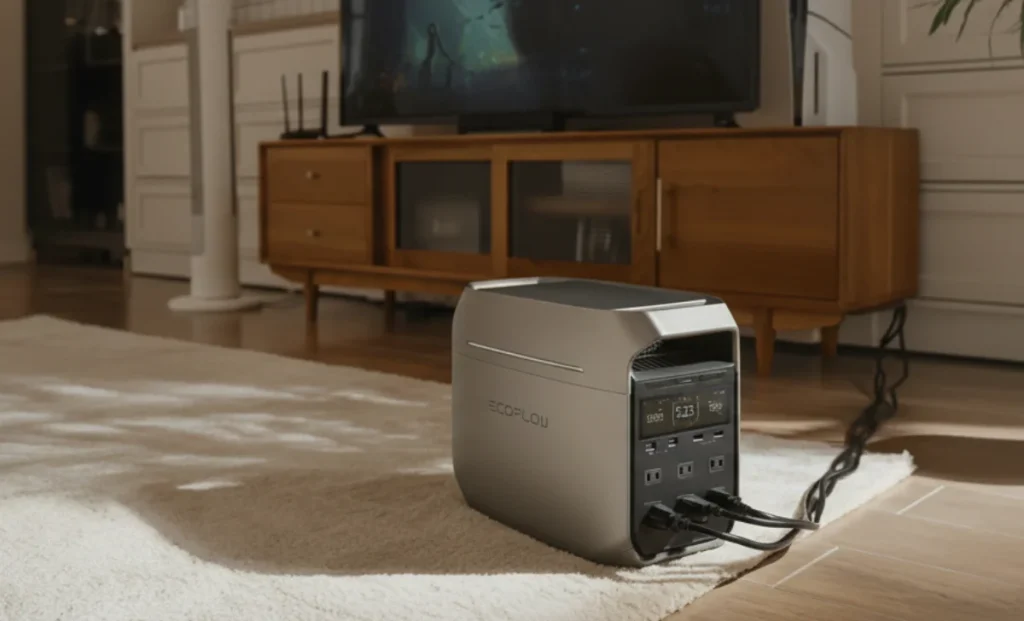How to Protect Your Portable Power Station From Overcurrent & Short Circuits

Portable power stations provide reliable backup power for camping, emergencies, and off-grid situations. However, electrical hazards like overcurrent and short circuits can damage these devices or create safety risks. This guide covers practical protection strategies you need to know.
Understanding the Risks
Overcurrent happens when electrical current exceeds your power station’s rated capacity. Common causes include connecting too many high-wattage devices simultaneously, using damaged adapters, or voltage fluctuations. The result is overheating that damages internal components or triggers automatic shutdown.
Short circuits occur when current flows directly between positive and negative terminals without normal resistance. This creates an immediate surge that can produce sparks, extreme heat, or fire. The compact, high-density battery design in portable power stations makes both risks particularly dangerous—small faults can escalate quickly without proper protection.
Built-In Safety Systems
Modern portable power station include multiple protection layers. The Battery Management System (BMS) constantly tracks power levels, flow, and heat in every battery unit. When unusual situations arise, it instantly cuts the connection to avoid harm.
MOSFET-based overcurrent protection circuits function as electronic breakers, cutting power automatically when current exceeds safe thresholds. For short circuits, current sensors and microcontrollers detect abnormal spikes and isolate the fault within milliseconds. Heat detectors track temperature as it happens and activate emergency shutoff before unsafe conditions occur.
Preventing Overcurrent During Use
Calculate total power draw before connecting devices. If your power station has a 500W output limit, ensure connected devices stay below this threshold. Check your device wattage ratings and add them up—exceeding capacity damages the power station and connected equipment.
Use manufacturer-provided cables and adapters. Third-party alternatives often use thinner wire gauge that overheats under load. Quality cables maintain proper current flow and include appropriate insulation.
Distribute load across multiple output ports rather than daisy-chaining extension cords and adapters to a single port. This reduces resistance and prevents overload at individual connection points.
Monitor temperature during operation. Slight heat while charging is expected, though too much warmth signals trouble. Disconnect immediately if the unit becomes hot to the touch, allow it to cool completely, then identify the cause before resuming use.
Power up in moisture-free spaces with good airflow and far from anything that can catch fire. Don’t abandon charging equipment unsupervised for long stretches. Most overcurrent incidents during charging happen when users aren’t present to notice warning signs.
Preventing Short Circuits
Inspect all cables before use. Look for cracked insulation, exposed wires, fraying, or damaged connectors. Replace compromised cables immediately—repair attempts are unreliable and dangerous.
Store power units away from wetness since water allows electricity to flow incorrectly and create failures. Never operate or charge in wet conditions, high humidity, or where condensation can form.
Prevent metal objects from contacting terminals during storage and transport. Keys, coins, tools, or other conductive items can bridge terminals and cause instant short circuits. Use protective covers on ports and store the unit in a dedicated case or compartment.
Connect to surge-protected AC outlets when charging. Power surges from unstable grids, generators, or lightning strikes can penetrate your power station and cause internal short circuits. A quality surge protector absorbs these spikes before they reach your device.
Advanced Protection Features
Quality power stations incorporate multi-stage current limiting using resistors and voltage controllers that regulate current before it reaches dangerous levels. The BMS provides real-time response to sudden system changes, disconnecting affected cells or ports in milliseconds to prevent cascading damage.
Higher-capacity models include redundant current paths. If one pathway experiences overcurrent stress, another compensates automatically while isolating the fault. This maintains system stability and prevents complete shutdown.
Maintenance and Long-Term Safety
Store your power station at 40-60% charge in cool, dry locations when not in use for extended periods. Extreme temperatures degrade battery chemistry and increase electrical failure risk.
Perform monthly visual inspections of cables, ports, and the unit exterior. Check for physical damage, corrosion, or unusual wear patterns. Test basic functionality by connecting a small load and verifying normal operation.
Follow manufacturer guidelines for charging cycles and capacity limits. Repeated deep discharges and overcharging accelerate battery degradation, which increases the likelihood of electrical faults.
Understanding these protection principles and following preventive measures ensures your portable power station remains safe and reliable. The combination of built-in safety systems and proper user practices minimizes electrical hazards while maintaining optimal performance.

